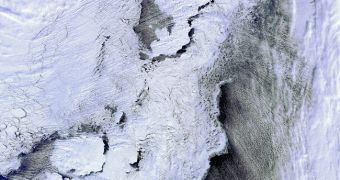The European Space Agency (ESA) is currently finishing up its last preparations, in anticipation of launching the first navigation satellite of the Galileo constellation. The latest step taken was opening up a new communications node in the Arctic.
The new node is the most northerly the agency operates, and is located less than 1,000 kilometers from the North Pole, in the Svalbard Archipelago. The area represents the northern part of Norway.
According to a new press release, the facility is installed at about 78 degrees latitude North, and its main role will be to received, process and relay data provided by the Galileo satellites.
This network is the European response to the American-built Global Positioning System (GPS), which is currently used around the world. Galileo is a response to the United States' denial to provide Europe with more precise location and positioning data.
The most accurate measurements the GPS system produces are reserved for the US military, while international partners get readings that are not that accurate. The European Union therefore decided to construct its own satellite network to cover its necessities.
Their example is followed by the Russian Federation, with its GLONASS system, and China, which is about to start building the Beidou navigation system. The latter will be divided in a regional and a global segment. The former is scheduled for completion in 2012.
ESA is well on its way too, especially now that the Svalbard Satellite Station (SvalSat) has been completed. The facility already assists the agency's famous Envisat and ERS-2 missions, after its inauguration in 1997.
“For Galileo, SvalSat will serve as a Sensor Station to check the timing and positioning accuracy of Galileo signals, as well as an Uplink Station to transmit correction messages to the satellites as needed, sharpening the overall accuracy of Galileo navigation services,” the ESA press release reads.
“Svalbard is one of the remotest Galileo ground stations,” it goes on to say.
“The road to Spitsbergen’s main settlement of Longyearbyen is regularly blocked by severe weather – a helicopter pad provides back-up access for the 23-strong team of engineers who operate SvalSat around the clock – and there are more polar bears than people on the island as a whole,” it concludes.
ESA inaugurate another facility in this part of the world back in December 2010. The Kiruna Galileo Station is located in the Swedish Arctic, and it will play a critically important role in allowing for data collected by the future satellites to reach governments, institutions, and the general public fast reliably.

 14 DAY TRIAL //
14 DAY TRIAL //